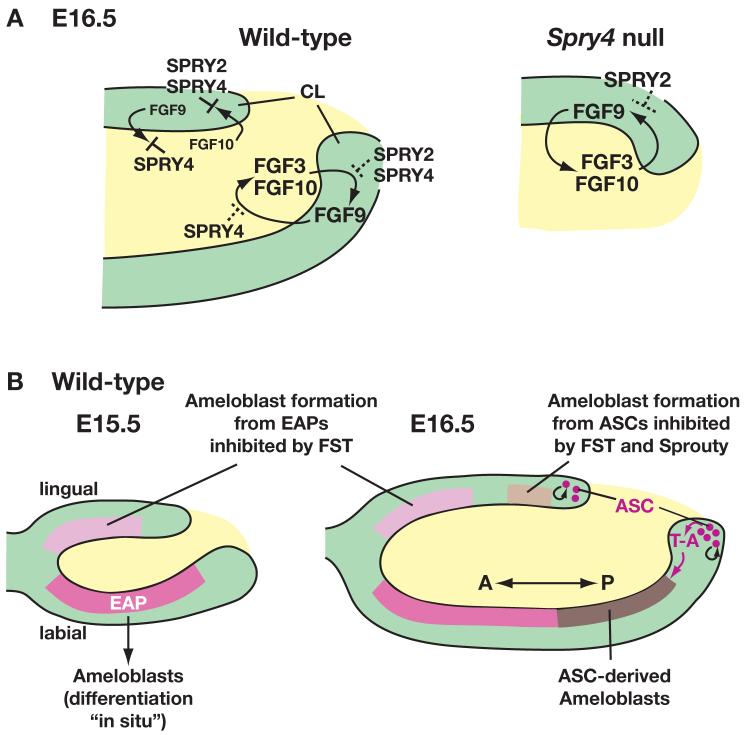Figure 6. Models for the role of Sprouty genes in controlling FGF signaling in the mouse incisor and for the generation of embryonic ameloblasts.
(A) Functions of Sprouty genes in inhibiting the establishment of a lingual FGF epithelial-mesenchymal signaling loop. Arrows indicate a stimulatory effect and the symbol ⊥ indicates an inhibitory effect of one signaling molecule on the expression of another. In wild-type, Sprouty genes are expressed on the labial side, but they do not prevent (dashed ⊥ symbol) reciprocal signaling between FGF9 in epithelium and FGF3/FGF10 in mesenchyme. On the lingual side, Sprouty genes inhibit signaling to adjacent tissues by the low levels of FGF9 in the epithelium and of FGF10 in the mesenchyme, and consequently there is no upregulation of FGF gene expression in either tissue. However, in Spry4 null incisors a reciprocal signaling loop between epithelium and mesenchyme is established because, in the absence of SPRY4, these tissues are hypersensitive to the low level of FGF signaling. In turn, the increase in FGF signaling on the lingual side results in the generation of ameloblasts from self-renewing stem cells in the CL.
(B) A proposal for how ameloblasts develop in the embryonic incisor. At E15.5, wild-type incisor epithelium contains “early ameloblast progenitor” (EAP) cells capable of limited proliferation. On the labial side, their descendants (in the domain colored pink) differentiate “in situ” into enamel-producing cells. Similar cells are present on the lingual side (in the domain colored lighter pink), but their differentiation is inhibited by Follistatin. Between E15.5 and E16.5, an ameloblast stem cell (ASC) population is established in the labial cervical loop (CL). Unlike EAP cells, ASCs have the capacity to self-renew (circular arrow), as well as give rise to ameloblasts. ASC descendants that will develop into enamel-producing cells may first form transit-amplifying (T-A) cells in the anterior CL. After several divisions, their descendants move out of the CL, and begin differentiating. In the E16.5 incisor, these ASC-derived pre-ameloblasts are found in a domain in the labial epithelium (colored dark brown), between the EAP domain and the CL. The diagram illustrates the possibility that ASCs are normally also present on the lingual side. However, no pre-ameloblasts derived from these ASCs are present in the lingual epithelium anterior to the CL (in the domain colored tan), because the generation of ameloblasts from lingual ASCs is blocked due to the inhibitory effects of Sprouty as well as FST function on lingual FGF gene expression.

